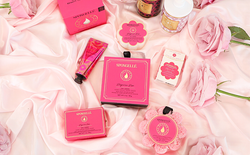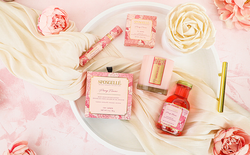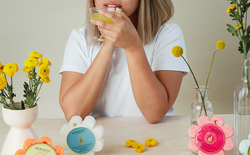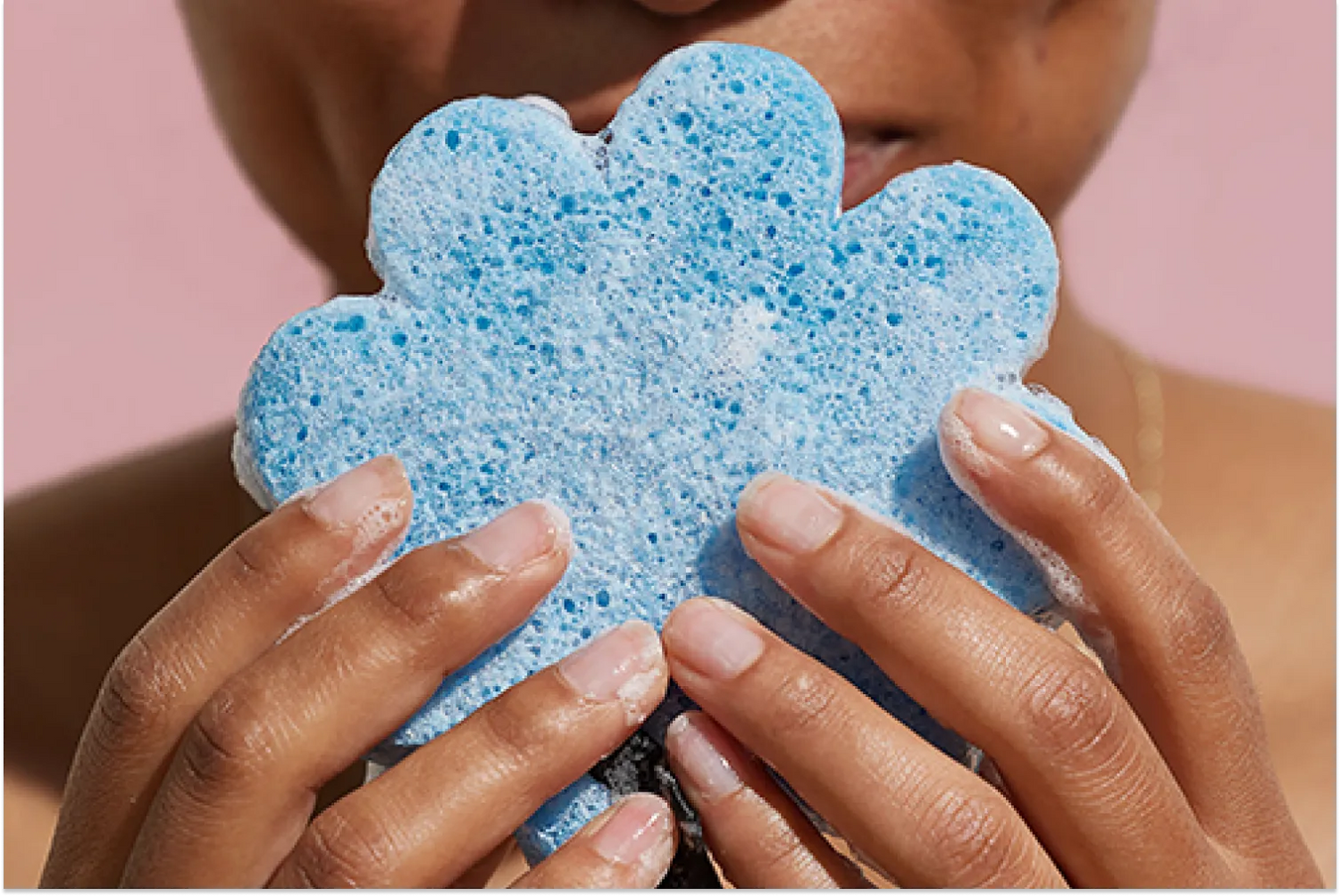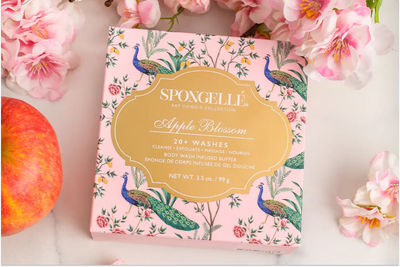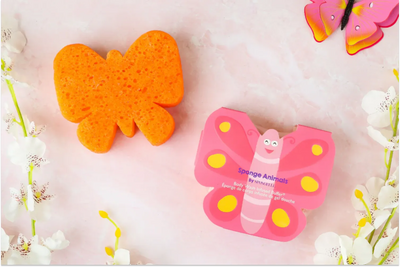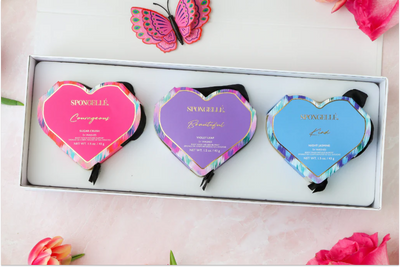Small choices can make a significant difference when it comes to keeping your skin healthy and radiant. One of the many decisions to consider is the choice between two popular bathing accessories: the loofah and the sponge.
These familiar staples have long served as exfoliants and cleansers in showers and baths. However, with the rise of innovative bath and body products, a better version of one of these trusty tools has entered the arena. We're going to go over what you need to know to make an informed choice about the ideal product for your daily shower or bath routine.
What Is a Loofah?
A loofah is a popular and versatile bathing accessory. It’s been used for centuries, in some form or another, to cleanse and exfoliate the skin. It originated from the luffa plant, scientifically called Luffa cylindrica. This product has evolved over the years and is now made from manufactured materials.
You can still find natural loofahs on the market, but synthetic versions are the easiest to find in stores. Synthetic loofahs are made from materials like plastic or nylon and are designed to replicate natural loofahs' texture and exfoliating properties.
The fibrous material gently scrubs away dead skin cells and impurities, leaving the skin feeling refreshed. While both types can be effective in providing a satisfying bathing experience, some users prefer the natural option due to its sustainability.
When using a loofah, it is essential to wet it thoroughly before applying any body wash or soap. The loofah will help create a rich lather, allowing you to cleanse your body. However, try to use the loofah with a gentle touch, as excessive scrubbing can irritate sensitive skin.
After you're done, it's important to rinse the loofah thoroughly after each use and allow it to dry in a well-ventilated area to prevent the growth of bacteria.
Overall, loofahs are a popular choice for those seeking a tool to cleanse their skin — but is it the best method?
What Is a Sponge?
Sponges, like loofahs, come in natural and synthetic options. Natural sea sponges are soft, porous creatures harvested from the ocean. These sponges are a renewable natural resource, making them an eco-friendly choice for people prioritizing sustainability.
Natural sea sponges offer a luxurious and gentle cleansing experience, making them a great choice for sensitive or delicate skin types. The natural texture of sea sponges allows them to hold an ample amount of water and soap, producing a rich lather that feels soothing on the skin.
For shoppers who prefer a more vegan option, synthetic sponges are readily available in the market. These sponges are made from materials like polyurethane foam or cellulose. The synthetic sponges are designed to mimic the texture and feel of natural sea sponges. Synthetic sponges can still provide an effective cleansing experience for a fraction of the cost.
When using a sponge, whether natural or synthetic, it is important to rinse it before the first use to remove any manufacturing residues. Like loofahs, sponges should be wet before applying body wash or soap for an optimal lathering effect. The softness of natural sea sponges and the gentle texture of synthetic sponges make them suitable for daily use.
Like loofahs, cleaning the sponge regularly and replacing it when signs of wear or deterioration become apparent is essential. Additionally, storing the sponge in a dry, ventilated place after each use will extend its lifespan and maintain its effectiveness.
Spongellé offers its own reusable and environmentally friendly option. Unlike other sponges and loofahs, these sponges are bacteria-resistant, preventing harmful impurities from spreading. They are also reusable for many washes and can be repurposed after you’re done using them for bathing.
What’s the Difference Between a Loofah and a Sponge?
Both loofahs and sponges have earned their rightful place in bathrooms around the world. Considering the exfoliating properties, softness and comfort levels, durability, and environmental impact may help you make a decision.
Exfoliation
Exfoliating your body is an important part of maintaining healthy skin. The abrasive surface of certain bath accessories can help slough off dead skin cells, unclog pores, and reveal brighter-looking skin.
This process can leave the skin feeling smoother, softer, and rejuvenated.
However, excessive scrubbing can lead to irritation, particularly for individuals with sensitive skin. Sponges are known for their soft and porous nature and may not exfoliate as well as a loofah.
While sponges do not offer the same level of exfoliation, they play a crucial role in maintaining cleanliness and overall skin health. The soft texture minimizes the risk of irritation while effectively cleansing the skin's surface.
Softness and Comfort
When it comes to softness and comfort, only one stands out. Loofahs' natural fibrous texture can be too rough for sensitive skin types. Even if your skin can take the exfoliation, there's something about the soft sensation of a sponge.
The gentle nature of sponges makes them an excellent choice for those with skin conditions that require a milder touch. Additionally, the sponge's ability to hold a significant amount of water and soap creates a cushioned and luxurious lather, further enhancing the bathing experience. Spongellé sponges come infused with nourishing body wash for the perfect two-in-one shower companion.
Durability and Longevity
Various factors influence the lifespan of loofahs and sponges. Natural loofahs tend to have a shorter lifespan compared to sponges. The natural fibers of a loofah can break down, leading to reduced exfoliating efficiency and potential fraying. Meanwhile, synthetic loofahs can cling to bacteria and other impurities.
You should probably replace your natural loofah every two to three weeks. Plastic loofahs can last up to two months, but pay attention to any possible mold growth. Regular cleaning and proper maintenance are essential to prolong your loofah's usability.
Sponges, especially synthetic ones, generally have a longer lifespan. Synthetic sponges are designed to withstand wear and tear better than natural loofahs, making them a durable choice for long-term use.
Environmental Impact
While natural loofahs and sponges have the advantage regarding environmental impact, synthetic sponges have the upper hand over plastic loofahs.
Once you're done with your loofah, there's not much you can do with it. However, you can repurpose your sponge for many different uses. You can fill them with water and freeze them to use as cooler packs in your lunch box. You can also use them for cleaning surfaces in your kitchen and bathroom.
What Are the Best Shower Hygiene Practices?
Maintaining optimal hygiene is essential for keeping your skin healthy. You may be forgetting to clean your shower accessories.
After each use, thoroughly rinse the loofah or sponge with hot water to remove any soap residue and impurities. Additionally, it's beneficial to soak the loofah or sponge in a mixture of warm water and vinegar once a week to disinfect and kill bacteria.
Regularly cleaning and drying the loofah or sponge after each use will help prevent the growth of harmful bacteria. Additionally, keep an eye out for signs of wear, fraying, or foul odors, as they indicate that it's time for a fresh replacement.
How Do You Choose the Right Option for You?
There are certain factors to consider when selecting a suitable cleansing accessory.
Skin Type and Sensitivity
When it comes to selecting between loofahs and sponges, understanding your skin type and sensitivity is crucial. Natural loofahs can be excellent for people with normal to oily skin. The natural exfoliating properties aid in removing excess oil, dirt, and dead skin cells, promoting smoother and clearer skin.
However, those with sensitive or delicate skin may find loofahs too abrasive, potentially causing irritation or redness. Sponges are a better option in such cases due to their gentle and soft texture. If you want the best of both worlds without the risk of contaminants that can live in your loofah, reach for a Spongellé sponge.
Personal Preferences
Personal preferences play a significant role in the decision-making process between loofahs and sponges. You may prefer the invigorating and exfoliating feel of loofahs or seek a softer, more pampering experience with sponges.
Additionally, your bathing habits can also influence the choice. You may want a product with more exfoliating properties if you have an active lifestyle or frequently engage in outdoor activities that leave your skin feeling grimy. On the other hand, a sponge might be the perfect match to indulge your senses if you prefer a gentle and relaxing bathing experience after a long day.
Ultimately, the right option between loofahs and sponges hinges on a combination of your skin type, sensitivity, personal preferences, lifestyle, and bathing habits.
Rub-a-Dub-Dub!
The choice between loofahs and sponges depends on individual preferences. However, if you want to avoid the risk of bacteria growth that comes with traditional loofahs and have all the benefits of both accessories, try a Spongellé buffer. The body wash-infused buffers promote healthy, radiant skin and will give you the best overall experience.
Sources:
Luffa or Loofah: How to Grow and Use this Amazing Plant | Lewis Ginter Botanical Garden
Sensitive skin: Treatments and causes | Medical News Today
Do You Know What’s Growing on Your Loofah? | Cleveland Clinic
Dead Skin: What Causes It and Treatment Options | VeryWell Health


